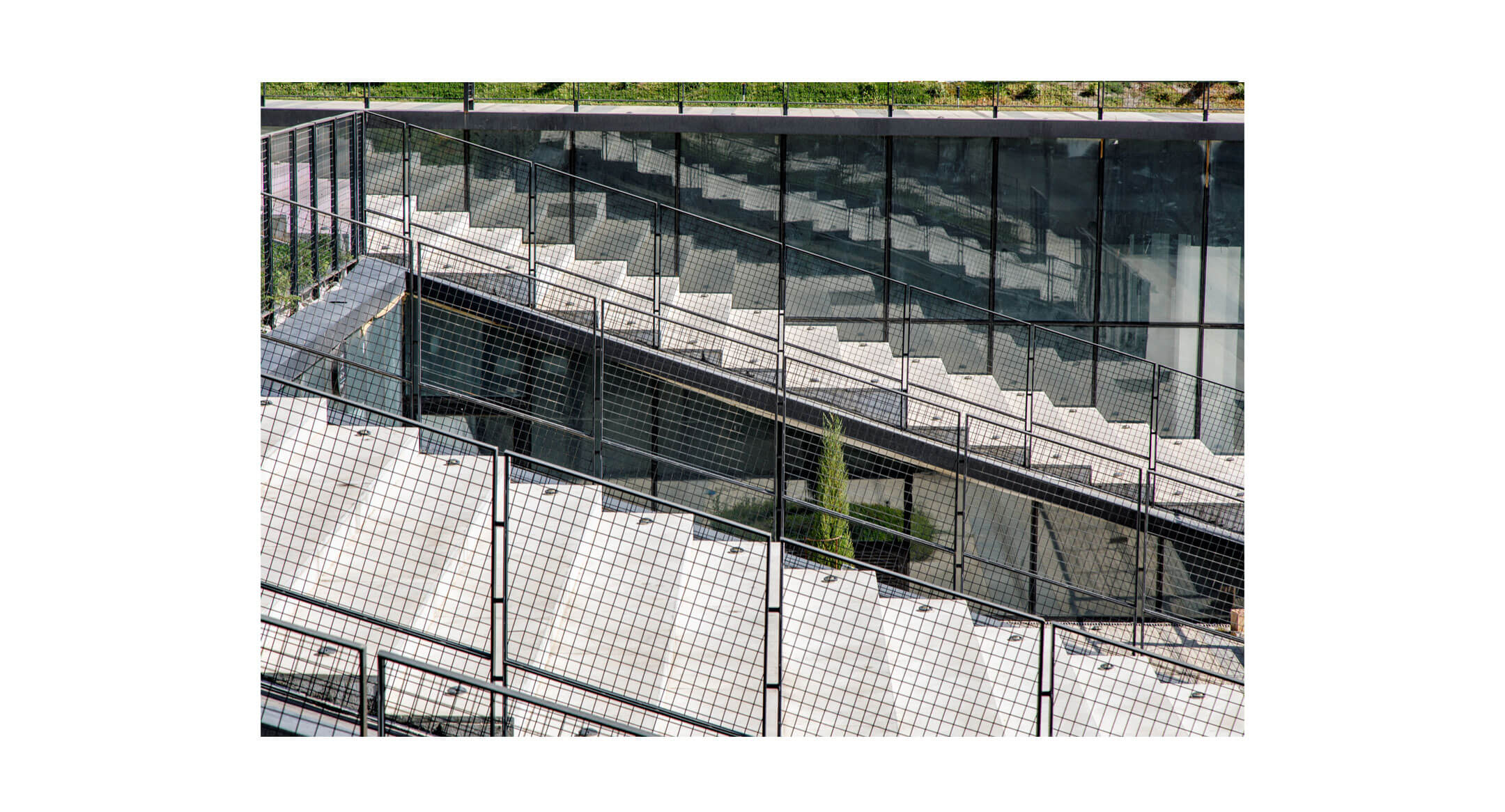HAMRAH SHAHR Complex
Project Type: Commercial and Service Complex ; Design: Karand Architectural Group ; Client: Hamrah-E- Aval Institute
Located on district 22, the site is surrounded by Danesh and Ardestani boulevards. This residential complex had been bought by Hamrah-E- Aval Institute when it was semi-finished. The project starting point was rethinking the spaces between residential towers. According to previous design, there were shortages in service areas (Parking, storage and utilities) and these spaces had been placed on the ground level.
The most important issue at the very beginning of the design was the dominance of cars over pedestrians in the previous design. One of the main drawbacks of this approach is ignoring the potentials of shared spaces in residential complexes as public places that allow people to be present and interact, and can become the basis of sustainable landscape design, and creating social interactions. where a majority of residents do not have access to a private garden, the green public spaces are of vital importance for recreation and well-being, especially for childrens.
The first step towards this approach was holding negotiations to convince the client to assign the ground-level to pedestrians rather than cars. Subsequently, the basements in the -1 level were connected through the construction of a north-south tunnel, so, entering the sites, all vehicles are directed to underground parking lots. The underground parking garage holds 352 parking spots
Hamrah Shahr complex presents a brand-new multi-functional landscape and sets a new citizen-oriented public space. The underground commercial space has merged into the green spaces and the ground is free for pedestrians. There are 6 residential towers, two 11-story building in the north and four 22-story building in the south, and the service area is located in the middle of the taller towers.
the connection between the central rectangular space at -1 level and the pedestrian paths and spaces on the ground level is provided by long stairs. In this regard, boundaries between above and below are blurred, two levels are merged and the space has become integrated.
There is a big black escalator at the edge of the central space to provide accessibility from underground parking to the ground spaces. This escalator is the only vertical element in the landscape, visible as a mark.
Project Information
Location
Tehran
Date
2018
Size
Landscape: 22000 m2 – Building: 19000 m2
Status
Completed
Prize
–
Client
Hamrah-E- Aval Institute
















